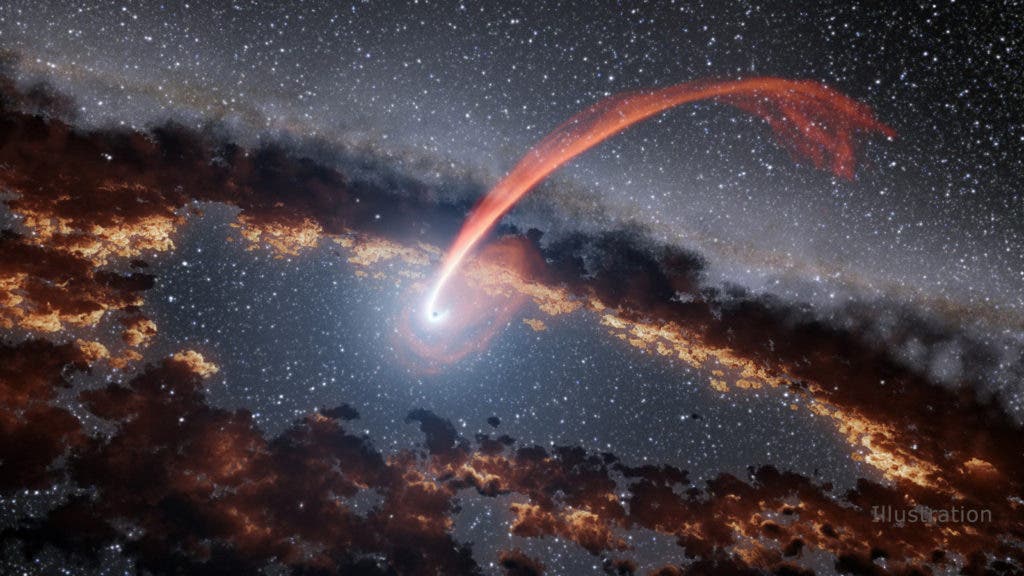If there’s one thing that black holes do extremely well, it’s drawing things to them and destroying them. Their gargantuan gravitational attraction can tear everything apart – even stars, which they stretch and compress like spaghetti. Now, a new study reports that black holes “burp” after they consume a star.

This illustration shows a glowing stream of material from a star as it is being devoured by a supermassive black hole in a tidal disruption flare. Image credit: NASA/JPL-Caltech
When a black hole devours a star, it’s called “stellar tidal disruption.” The phenomenon occurs when the star gets too close to the black hole and falls under its influence, being torn apart by tidal forces pulling in different directions. During the process, stars are spaghettified – yes, this is an actual astronomic term also called the noodle effect. During spaghettification, stars are stretched and compressed into long thin shapes (kind of like spaghetti).
Now, as the black hole destroys the star, a huge flare is emitted releasing enormous amounts of energy. This has been observed several times in recent years, but we don’t understand the process all too well. Now, two new studies provide some vital information about stellar tidal disruption. Using NASA’s Wide-field Infrared Survey Explorer (WISE), the studies analyze flares by studying how surrounding dust absorbs and re-emits their light like echoes. This allowed them to quantify the energy of the flares better than ever before.
“This is the first time we have clearly seen the infrared light echoes from multiple tidal disruption events,” said Sjoert van Velzen, postdoctoral fellow at Johns Hopkins University, Baltimore, and lead author of a study finding three such events, to be published in the Astrophysical Journal. A fourth potential light echo based on WISE data has been reported by an independent study led by Ning Jiang, a postdoctoral researcher at the University of Science and Technology of China.
The flares emit a huge amount of energy in a broad range of frequencies including ultraviolet and X-ray light. This energy pulverizes any existing dust around the black hole. By seeing how much of the dust is pulverized, we can make deductions about the energy and nature of the process.
“Our study confirms that the dust is there, and that we can use it to determine how much energy was generated in the destruction of the star,” said Varoujan Gorjian, an astronomer at NASA’s Jet Propulsion Laboratory, Pasadena, California, and co-author of the paper led by van Velzen.
Understanding these flares is important because many astronomers believe that they actually give birth to new stars and help solidify the shape of galaxies. According to our understanding, this is a process which happened very often in the early stages of the Universe, 14 billion years ago.









